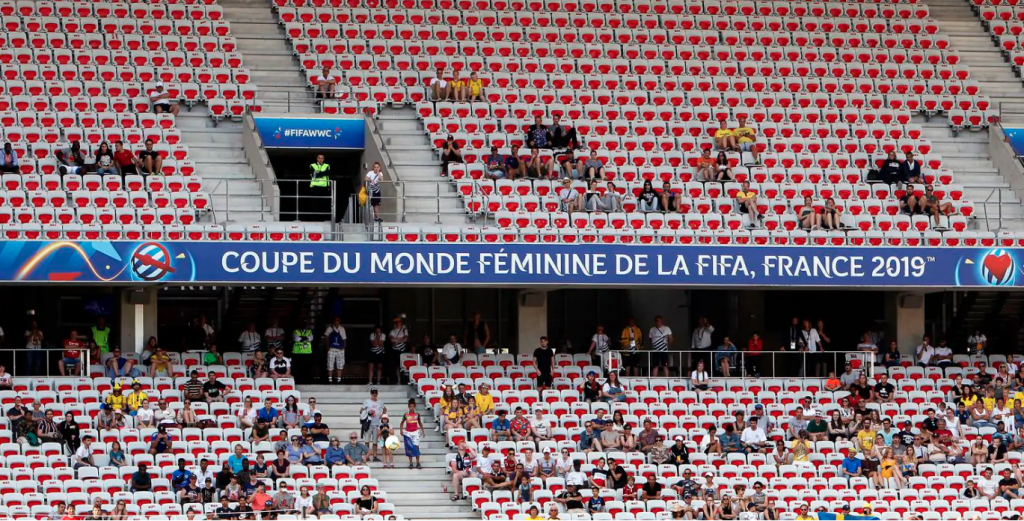
Ever wondered why women’s team sports are watched and otherwise supported so meagerly by women themselves? The underlying premise here may strike one as obtuse, even churlish this week, what with thousands of women in the stands watching the 2019 Women’s World Cup in stadia all over France. But none of last week’s Round of 16 matches sold out and World Cup crowds can mislead. You’ll recall they were enormous during the 1999 Women’s World Cup, here in the U.S. That event was seen as a tipping point for the women’s game in North America, and yet three separate women’s professional leagues have been attempted in the two decades since. The first two folded and the third — the National Women’s Professional Soccer League — continues to teeter on the brink of financial collapse and cultural irrelevance.
Soccer remains a funny duck in America. More than those in other footballing nations, soccer fans here are beguiled by and pay outsized attention to their national teams — as opposed to the privately administered clubs that compete in domestic leagues. And surely there are entrenched gender biases that have worked against the serial iterations of women’s pro soccer in this country, or the WNBA, or women’s professional hockey wherein the Canadian professional league just folded. U.S. hockey international Kendall Coyne Schofield told the New York Times in April that, “People are drooling for women’s hockey. But the product we deliver isn’t being shown.”
Are they drooling for it really? And what does she mean when she says, “people”? I don’t have numbers on how many folks consume women’s hockey at the Olympics, for example, and how that audience breaks down by gender. But it might surprise you to learn that nearly 70 percent of the WNBA’s viewership is male. That surprised me.
The WNBA has been around since the late 1990s; it has never turned a profit, despite being financially backed and marketed by one of the most savvy organizations in world sport, the NBA — an organization that has every incentive to create a larger audience for both of its on-court products. The core of that new, larger audience would presumably be women who don’t otherwise follow the NBA. But women have responded to the WNBA with the same relative indifference they exhibit toward women’s professional soccer and hockey. Here’s Adam Silver on the subject in 2018:
“It’s interesting: Women’s basketball is largely supported — just in terms of the demographics — by older men, for whatever reason, who like fundamental basketball, and it’s something I’ve talked a lot to the players about,” he said. “We’re not connecting with almost the same demographic that our players are. I’m always saying our players are roughly, let’s say, 21 to 34, in that age range. I’m saying [to the players], ‘Why do you think it is that we’re not getting your peers to want to watch women’s basketball?’
“So in a way I think it’s a good problem to have in that I think the game looks fantastic, and it’s amazing where the league now is from over 20 years ago when it launched,” Silver added, “but we still have a marketing problem, and we gotta figure it out. We gotta figure out how we can do a better job connecting to young people and how they could become interested in women’s basketball.”